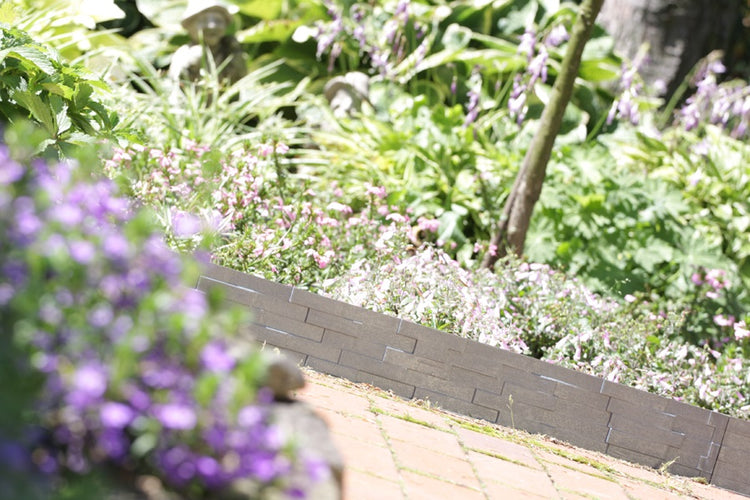A well-maintained garden is a reflection of meticulous care and attention to detail. One of the essential elements in achieving a polished and tidy garden is the use of garden edging. In this article, we'll explore three distinct types of garden edging: grass edge borders, garden path edging, and palisade garden edging, and discover how each can elevate the aesthetics of your outdoor space.

1. Grass Edge Borders: Clean and Defined Lawns
Grass edge borders are an excellent choice for those who seek to define and maintain the edges of their lawns neatly. These borders serve both aesthetic and practical purposes in your garden.
Achieving Neat Edges: Grass edge borders create clear and crisp boundaries between your lawn and other elements in your garden, such as flower beds, pathways, or driveways.
Weed Control: By installing grass edge borders, you prevent grass from encroaching into flower beds and vice versa, reducing the need for frequent weeding and maintenance.
Easy Mowing: Lawnmowers can navigate along the edge of the grass with ease, ensuring that you can mow right up to the border, leaving no overgrown or untidy patches.
Materials and Styles: Grass edge borders come in various materials, including metal, plastic, wood, and stone, allowing you to choose a style that complements your garden's overall design.

2. Garden Path Edging: Guiding the Way
Garden path edging plays a crucial role in defining and enhancing the aesthetics of your garden paths and walkways. It not only provides a clear delineation but also adds a touch of sophistication to your outdoor space.
Defined Walkways: Garden path edging ensures that your walkways remain clearly marked, preventing the spread of gravel, mulch, or paving stones into the surrounding areas.
Safety: Well-defined paths help guide visitors and prevent them from inadvertently straying off the designated walkway.
Aesthetic Appeal: These edgings come in various shapes, sizes, and materials, allowing you to select the one that complements the overall theme of your garden.
Materials and Styles: Garden path edging materials range from classic brick and stone to modern and durable metals, each with its unique charm.

3. Palisade Garden Edging: Elegance and Structure
Palisade garden edging is a favorite choice for gardeners who seek to infuse elegance and structure into their outdoor spaces. These vertical garden edgings are versatile and serve both functional and decorative purposes.
Vertical Definition: Palisades stand upright, providing a vertical barrier that defines different garden sections or separates the garden from other outdoor areas.
Plant Protection: They act as a protective barrier around delicate plants, shielding them from accidental trampling or encroachment by other garden elements.
Architectural Appeal: Palisade garden edging adds a touch of architectural elegance to your garden, creating a visual focal point that enhances its overall aesthetics.
Materials and Styles: You can choose from various materials, such as wood, stone, concrete, or even metal, to create the palisade edging that best suits your garden's style.
In conclusion, garden edging is a simple yet effective way to elevate the aesthetics and functionality of your outdoor space. Whether you opt for grass edge border, garden path edging, or palisade garden edging, each type brings its unique charm and benefits to your garden. By defining boundaries, preventing weeds, and enhancing the overall design, these garden edgings help create a well-organized and visually appealing landscape that you can enjoy year-round. So, embark on your garden edging project and transform your outdoor oasis into a picturesque and well-defined space.
Get more information on GARDENIX


